Listening Structures: Difference between revisions
mNo edit summary |
|||
| (22 intermediate revisions by 2 users not shown) | |||
| Line 3: | Line 3: | ||
'''Yasmine Boudiaf''' | '''Yasmine Boudiaf''' | ||
=== Research in practice === | |||
I developed these listening sculptures as a way to provide a space for ideas to sit and develop during group discussions. | |||
Part of my role as a research assistant in ''Infrastructural Interactions'' involved transcribing audio recordings. I was aware of what a typical audio transcription looked like, in terms of structure, punctuation and commonly used terms to describe audio phenomena. I wanted as much as possible to keep to ''good practice'' and to do my job well. And yet, on listening to the personal testimonies and conversations of the contributors, I became aware of my role as a form of censorship, that all transcribers participate in when making decisions on what should and should not be included in the final transcript. Whilst I included all the words that were said, I made editorial decisions to omit what are generally not considered relevant to the objective of the research task. The implication being that what is not included in the final transcript therefore has no value. I would contest that such omitted content has value beyond what is prescribed as relevant to a research task. I wanted to honour the omitted content and make visible the hidden emotional labour involved in such a task with a statement at the bottom of each transcript: <blockquote>''I apologise for omitting laughter, discourse markers and filler words. It’s not that they’re not valid, they are – they add colour and humanity to the conversation – they just don’t serve the purpose of this exercise.'' | |||
''Sincerely,'' | |||
''The Transcriptor''</blockquote> | |||
As a researcher within and outside academia, various restrictions are imposed on the way I practice. These explicit and implicit forms of control can originate form any one of a number of actors involved in the infrastructure of a research project, such as a funder, an academic institution, an agency, a principal investigator, a legal team, a finance administrator or a contributor. This can be quite frustrating, and I have found myself at times taking a positivist standpoint, of ''good academic practice'', the implication being that genuine knowledge is there to be seized, if only rigorous systems were in place that captured as much content as possible, in as pure a form as possible. My 'hard sciences' background and English education are likely contributing factors to this way of thinking. | |||
As I work to move away from a process of information control that assigns status to particular forms and sources of knowledge, and towards a decolonial, material-semiotic approach of knowledge co-creation that sees the actors involved in a research project as a web of relations where meaning is produced in that process, it becomes necessary to interrogate my own position in this system and how I behave as a researcher, in the projects that I participate in or design. | |||
Being reflexive as part of my research practice means that I interrogate the way I do things and so am able to design new research processes. For example, my workshop series ''Entanglements''<ref>UAL Creative Computing Institute (2021) ''Entanglements | Yasmine Boudiaf''. Available at: <nowiki>https://www.youtube.com/watch?v=-dJbPW6ycbo</nowiki> (Accessed: 28 November 2021).</ref> is a collective analysis of public-sector technology contracts, the output of which is a collage of writing, scribbles, images, memes and links that express the injustice (and absurdity) of the entanglement between a state powers and private tech companies in a way that a typical written report cannot. My ongoing collaborative authorship project ''AI Justice Matrix''<ref>Boudiaf, Yasmine 2021, ''AI Justice Matrix'', accessed Nov 2021,https://aijusticematrix.com/</ref> invites the perspectives of practitioners concerned with the mechanics of knowledge formation that affect our relationship with technology. It treats all sources and expression of knowledge as valid and offers issues to consider when contemplating AI practice without necessarily offering an answer. | |||
Reflexivity is particularly important when confronting the issue of power asymmetries inherent in researcher / participant dynamics. There may be group conversation, but the presence of the researcher means that the participants are under their gaze - it’s difficult to discern what effect this may have on the nature of the participant’s output. | |||
===Listening=== | ===Listening=== | ||
Having a space that participants add thoughts to anonymously as they arise may help to reduce participants’ inhibitions. | Having a space that participants add thoughts to anonymously as they arise may help to reduce participants’ inhibitions. | ||
What would listening look like when assigned roles were no longer visible, and participants were not confined by conversational dynamics (such as waiting for your turn to speak)? The listening becomes detached from any person yet at the same time, everyone becomes the listener, as each participant is presented with the output at the same time. | |||
This ''distributed listening'' becomes ''active distributed listening'' when participants have access to the platform where contributions are collected and are able to manipulate them. These contributions, or thoughts, take on a life of their own; they are picked up and moved around by anyone, built on, manipulated and challenged. Half-formed ideas can manifest, and be made whole by someone else. | This ''distributed listening'' becomes ''active distributed listening'' when participants have access to the platform where contributions are collected and are able to manipulate them. These contributions, or thoughts, take on a life of their own; they are picked up and moved around by anyone, built on, manipulated and challenged. Half-formed ideas can manifest, and be made whole by someone else. | ||
| Line 33: | Line 29: | ||
===Using the Listening Structures=== | ===Using the Listening Structures=== | ||
<div id="columns"> | |||
[[File:Floating Thoughts.gif|alt=a diamond shapes with floating thoughts inside|thumb|'''A suspension of thoughts just existing.''' ]] | |||
[[File:Commoning.gif|alt=three connected boxes with thoughts in them|thumb|'''Taking consistent themes, grouping them, making links between them.''']] | |||
[[File:Speculation Chamber.gif|alt=three ovals with thoughts inside|thumb|'''Taking real-world phenomena and imagining positive and negative versions.''']] | |||
[[File:Epistemologies.gif|alt=circles with different epistemic sources|thumb|'''Displaying sources of knowledge and comparing their validity.''']] | |||
[[File:Journey to Intervention.gif|alt=a line with thoughts traveling along it|thumb|'''The path ideas take in order to produce meaningful interventions.''']] | |||
[[File:Deep Fissures.gif|alt=grey angular area with thoughts floating into it|thumb|'''A space to acknowledge silences, omissions and redactions. For unvoiced thoughts and dismissed feelings.''']] | |||
</div> | |||
These are diagrams made of geometric shapes to aid in collective idea development. As ideas travel through these structures the nature of these ideas changes, providing a geometric framework for them to develop.<blockquote>'''FLOATING THOUGHTS:''' A suspension of thoughts just existing. | These are diagrams made of geometric shapes to aid in collective idea development. As ideas travel through these structures the nature of these ideas changes, providing a geometric framework for them to develop.<blockquote>'''FLOATING THOUGHTS:''' A suspension of thoughts just existing. | ||
| Line 51: | Line 57: | ||
===References=== | ===References=== | ||
<references /> | |||
<small>Cite as: Boudiaf. Yasmine. 2022. "Listening structures". In Infrastructural Interactions: Survival, Resistance and Radical Care, edited by Helen V Pritchard, and Femke Snelting. Brussels: The Institute for Technology In the Public Interest. http://titipi.org/pub/Infrastructural_Interactions.pdf</small> | |||
<small>Cite as: Boudiaf. Yasmine. | |||
Latest revision as of 18:36, 17 October 2022
Listening Structures
Yasmine Boudiaf
Research in practice
I developed these listening sculptures as a way to provide a space for ideas to sit and develop during group discussions.
Part of my role as a research assistant in Infrastructural Interactions involved transcribing audio recordings. I was aware of what a typical audio transcription looked like, in terms of structure, punctuation and commonly used terms to describe audio phenomena. I wanted as much as possible to keep to good practice and to do my job well. And yet, on listening to the personal testimonies and conversations of the contributors, I became aware of my role as a form of censorship, that all transcribers participate in when making decisions on what should and should not be included in the final transcript. Whilst I included all the words that were said, I made editorial decisions to omit what are generally not considered relevant to the objective of the research task. The implication being that what is not included in the final transcript therefore has no value. I would contest that such omitted content has value beyond what is prescribed as relevant to a research task. I wanted to honour the omitted content and make visible the hidden emotional labour involved in such a task with a statement at the bottom of each transcript:
I apologise for omitting laughter, discourse markers and filler words. It’s not that they’re not valid, they are – they add colour and humanity to the conversation – they just don’t serve the purpose of this exercise.
Sincerely,
The Transcriptor
As a researcher within and outside academia, various restrictions are imposed on the way I practice. These explicit and implicit forms of control can originate form any one of a number of actors involved in the infrastructure of a research project, such as a funder, an academic institution, an agency, a principal investigator, a legal team, a finance administrator or a contributor. This can be quite frustrating, and I have found myself at times taking a positivist standpoint, of good academic practice, the implication being that genuine knowledge is there to be seized, if only rigorous systems were in place that captured as much content as possible, in as pure a form as possible. My 'hard sciences' background and English education are likely contributing factors to this way of thinking.
As I work to move away from a process of information control that assigns status to particular forms and sources of knowledge, and towards a decolonial, material-semiotic approach of knowledge co-creation that sees the actors involved in a research project as a web of relations where meaning is produced in that process, it becomes necessary to interrogate my own position in this system and how I behave as a researcher, in the projects that I participate in or design.
Being reflexive as part of my research practice means that I interrogate the way I do things and so am able to design new research processes. For example, my workshop series Entanglements[1] is a collective analysis of public-sector technology contracts, the output of which is a collage of writing, scribbles, images, memes and links that express the injustice (and absurdity) of the entanglement between a state powers and private tech companies in a way that a typical written report cannot. My ongoing collaborative authorship project AI Justice Matrix[2] invites the perspectives of practitioners concerned with the mechanics of knowledge formation that affect our relationship with technology. It treats all sources and expression of knowledge as valid and offers issues to consider when contemplating AI practice without necessarily offering an answer.
Reflexivity is particularly important when confronting the issue of power asymmetries inherent in researcher / participant dynamics. There may be group conversation, but the presence of the researcher means that the participants are under their gaze - it’s difficult to discern what effect this may have on the nature of the participant’s output.
Listening
Having a space that participants add thoughts to anonymously as they arise may help to reduce participants’ inhibitions.
What would listening look like when assigned roles were no longer visible, and participants were not confined by conversational dynamics (such as waiting for your turn to speak)? The listening becomes detached from any person yet at the same time, everyone becomes the listener, as each participant is presented with the output at the same time.
This distributed listening becomes active distributed listening when participants have access to the platform where contributions are collected and are able to manipulate them. These contributions, or thoughts, take on a life of their own; they are picked up and moved around by anyone, built on, manipulated and challenged. Half-formed ideas can manifest, and be made whole by someone else.
This side-system of qualitative data gathering adds value to a research project through capturing contributions that would have otherwise remained as thoughts in participants’ minds. It can also continue to exist beyond the lifespan of a research project, in acknowledgement that not all meaningful contributions can be captured in a prescribed session.
Using the Listening Structures
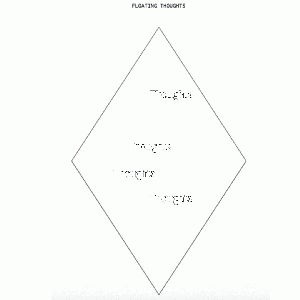
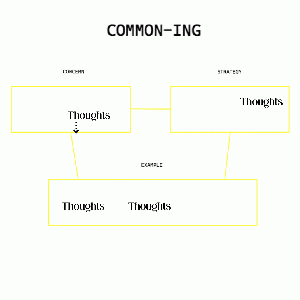
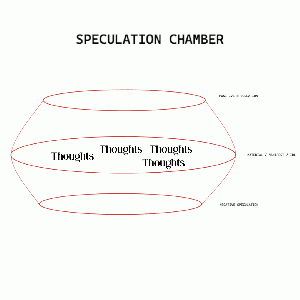
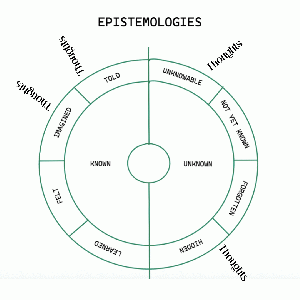
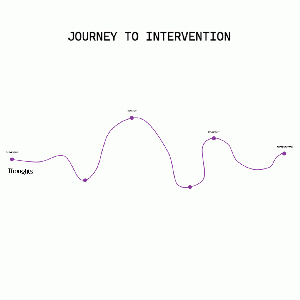
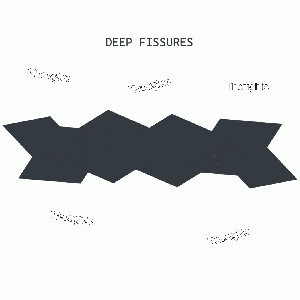
These are diagrams made of geometric shapes to aid in collective idea development. As ideas travel through these structures the nature of these ideas changes, providing a geometric framework for them to develop.
FLOATING THOUGHTS: A suspension of thoughts just existing.
COMMON-ING: Taking consistent themes, grouping them, making links between them.
SPECULATION CHAMBER: Taking real-world phenomena and imagining positive and negative versions.
EPISTEMOLOGIES: Displaying sources of knowledge and comparing their validity.
JOURNEY TO INTERVENTION: The path ideas take in order to produce meaningful interventions.
DEEP FISSURES: A space to acknowledge silences, omissions and redactions. For unvoiced thoughts and dismissed feelings.
The Listening Structures are drawn on a non-extractive collective drawing pad, Excalidraw. The original pad should not be edited, but rather a copy should be made and populated so that the original stays empty and useful to others, however, new, empty structures can be added to the original pad that others may find useful.
- Visit https://excalidraw.com/#json=6497964574900224,Ps6Si-EVmnSHpavjSZKVPg
- Click “Export”
- Click “Export to Link” (wait a while until there is a pop up window with a new link)
- Copy and paste the link into a browser window and edit your version of the structures as you like.
References
- ↑ UAL Creative Computing Institute (2021) Entanglements | Yasmine Boudiaf. Available at: https://www.youtube.com/watch?v=-dJbPW6ycbo (Accessed: 28 November 2021).
- ↑ Boudiaf, Yasmine 2021, AI Justice Matrix, accessed Nov 2021,https://aijusticematrix.com/
Cite as: Boudiaf. Yasmine. 2022. "Listening structures". In Infrastructural Interactions: Survival, Resistance and Radical Care, edited by Helen V Pritchard, and Femke Snelting. Brussels: The Institute for Technology In the Public Interest. http://titipi.org/pub/Infrastructural_Interactions.pdf